San Francisco’s Chinatown is not only the oldest, but also the most famous and largest Chinatown in the US. Thanks to the many ornamented houses, shops and eateries, the area is one of the city’s most popular tourist attractions.
History of Chinatown
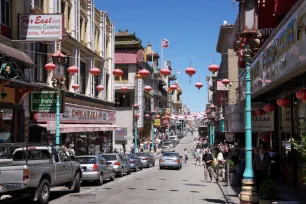
San Francisco’s Chinatown was first established in the mid-nineteenth century, attracting immigrants mostly from China’s Guangdong Province. Most of these individuals had jobs with the Central Pacific Railroad. They soon established their own town within the city.
By the end of the nineteenth century, however, racial tensions in San Francisco started to grow and the U.S. government passed the Chinese Exclusion Act, greatly reducing the number of Chinese allowed into the country, which impacted the population of Chinatown. In addition, much of the neighborhood was destroyed during the 1906 fire caused by the Great Earthquake.
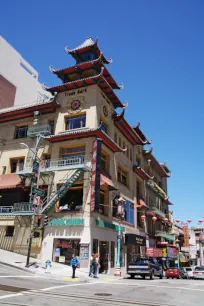
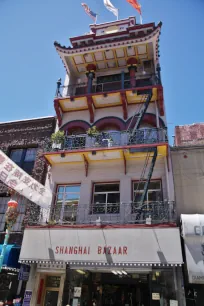
Despite the setbacks, Chinatown soon started to revitalize. During the 1920s, more and more building were decorated with pagoda-like roofs and the lampposts were decorated with dragon motifs. After World War II the racial law was retracted and in the 1950s Chinatown started to grow quickly. This time, the area not only attracted Chinese immigrants, but it also started to lure tourists who wanted to find out more about the Chinese culture. Chinatown remains a major tourist attraction to this day, purportedly attracting more visitors than the Golden Gate Bridge.
Touring Chinatown
Many visitors head to Chinatown to explore its unique shops, restaurants, and the overall culture of the area. Most of the shops are located around Grant Street, the central axis of Chinatown’s tourist area. Here all lampposts are ornamented with colorful Chinese motifs and the many tourists jostle for space on the narrow sidewalks along the many souvenir shops, eateries and herbal shops. The entrance gate to Chinatown is also located at Grant Street.
Another attraction for visitors are the many temples in Chinatown. Most are situated at the upper level of row houses, so they are closer to heaven. In Waverly Place – known as ‘the street of painted balconies’ – are no less than three temples, among them the well known Tin How Temple. This temple was founded in 1852 and is the oldest in the United States. It is now housed in a building erected in 1911.
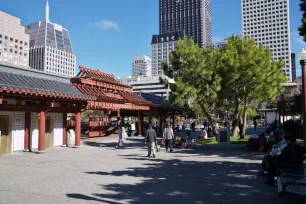
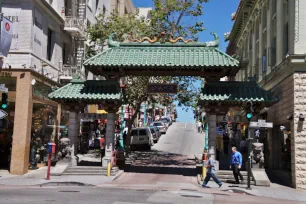
Besides the temples there are many other interesting buildings in Chinatown such as the Old St. Mary’s Church, a Catholic church from 1854 and San Francisco’s oldest cathedral. There’s also the Bank of Canton – a 1909 structure that was built as a telephone exchange – its operators spoke a range of different Chinese dialects – and the historic Sing Chong Building, the first structure in the area that was built after the 1906 earthquake.
Chinatown’s central public space is Portsmouth Plaza, one of the few open areas in this otherwise crowded neighborhood. Here, all the buildings are decorated in a pagoda style. The square is very popular with both children and the elderly, who regularly congregate here to play board games.
Chinatown Gateway
The most photographed structure in Chinatown is undoubtedly the large Chinatown Gateway, also known as the Dragon Gate. It is located in Grant Street at the southern edge of Chinatown.
The gate was designed in 1970 by Clayton Lee and is based on the ceremonial gates that can be found in Chinese villages. The gate is adorned with sculptures of fish and dragons and is flanked by two large lion statues. The gate has three passageways. The large, central one is meant for dignitaries, while the two smaller passageways are meant for the common people.

